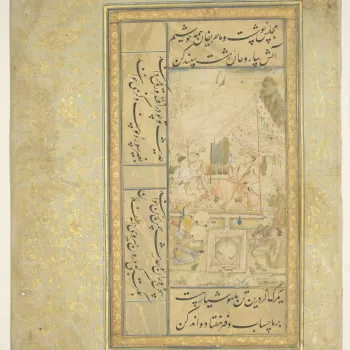
The Mughals
In the seventeenth century, a dynasty of emperors, now known as the Mughals, celebrated a glorious Golden Age. Descended from the Timurid rulers of Iran and Central Asia, the Mughals were a Muslim, Persian-speaking dynasty. Many of the South Asian paintings and manuscripts in the Royal Collection on display in this room date to the period when the Mughal Empire, richer and stronger than any European power, encompassed much of the Indian subcontinent.















